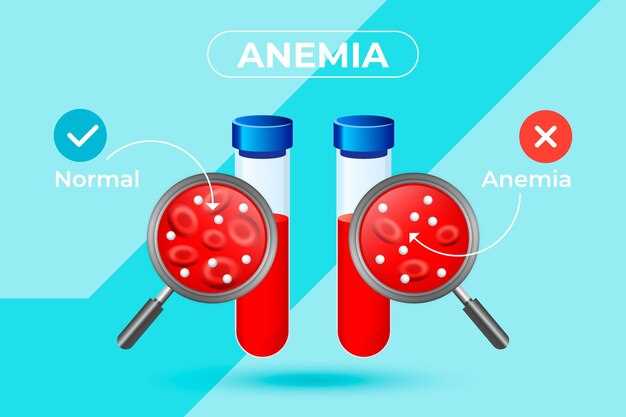
Discover the potential risks and benefits of combining azithromycin and amiodarone.
Learn about possible interactions, side effects, and precautions before taking these medications together.
Overview of the interaction
Amiodarone is a potent antiarrhythmic medication used to treat various types of irregular heartbeats. Azithromycin, on the other hand, is an antibiotic commonly prescribed for respiratory and skin infections. When these two medications are taken together, there is a potential for a drug-drug interaction.
Mechanism of Interaction
The main mechanism behind the interaction between amiodarone and azithromycin is their potential to prolong the QT interval, which can lead to a dangerous ventricular arrhythmia known as torsades de pointes. Amiodarone itself has a well-known propensity to prolong the QT interval, and when combined with azithromycin, which also has similar effects, the risk of QT prolongation and torsades de pointes is significantly increased.
To better understand this interaction, let’s delve into the pharmacokinetic implications of combining these two medications.
| Drug | Metabolism | Effects on CYP450 |
|---|---|---|
| Amiodarone | Metabolized by CYP3A4 and CYP2C8 | Inhibitor of CYP3A4 and CYP2C8 |
| Azithromycin | Metabolized by CYP3A4 and CYP2C9 | Weaker inhibitor of CYP3A4 and CYP2C9 |
Mechanism of interaction
Azithromycin has been shown to inhibit the enzyme CYP3A4, which is responsible for the metabolism of amiodarone. This inhibition can lead to increased levels of amiodarone in the body, potentially causing toxicity.
Amiodarone is metabolized by CYP3A4 and has a narrow therapeutic index. When co-administered with azithromycin, the concentration of amiodarone in the blood may increase significantly, increasing the risk of adverse effects.
Effects on Pharmacokinetics

- The inhibition of CYP3A4 by azithromycin can lead to decreased metabolism of amiodarone, resulting in higher plasma levels of amiodarone.
- This can prolong the half-life of amiodarone and lead to increased drug exposure, potentially increasing the risk of side effects.
Pharmacokinetic implications
The interaction between azithromycin and amiodarone may lead to altered pharmacokinetics of both drugs. Azithromycin is primarily metabolized by the liver, particularly by the enzyme CYP3A4. Amiodarone is also metabolized by CYP3A4 and can inhibit this enzyme, leading to decreased metabolism of azithromycin.
Effects of amiodarone on azithromycin:
| Effect | Implication |
|---|---|
| Increased azithromycin levels | Potential for azithromycin toxicity due to higher concentrations |
| Prolonged half-life of azithromycin | Extended duration of action and increased risk of adverse effects |
It is essential to monitor patients for signs of azithromycin toxicity, such as gastrointestinal disturbances, liver function abnormalities, and QT interval prolongation, when these two drugs are used concomitantly. Adjusting the dosage of azithromycin or monitoring drug levels may be necessary to manage the pharmacokinetic implications of this interaction.
Clinical significance

The interaction between azithromycin and amiodarone can lead to an increased risk of QT prolongation and torsades de pointes, a serious ventricular arrhythmia. Patients who are prescribed both medications should be closely monitored for signs and symptoms of QT prolongation, such as palpitations, dizziness, or fainting. In some cases, the concomitant use of azithromycin and amiodarone may necessitate dose adjustments or alternative treatment options to minimize the risk of adverse cardiac events.
Management of the interaction
When azithromycin is co-administered with amiodarone, close monitoring for potential adverse effects is essential. Healthcare providers should educate patients about the signs and symptoms of adverse reactions and advise them to seek medical attention if they experience any concerning symptoms.
It is important to consider the potential for QT prolongation and arrhythmias when using these medications together. Patients should be monitored for changes in their QT interval, especially if they have risk factors for QT prolongation, such as electrolyte abnormalities or other medications that can prolong the QT interval.
- Monitor electrolyte levels regularly, especially potassium and magnesium, as imbalances can increase the risk of QT prolongation.
- Avoid concomitant use of other medications known to prolong the QT interval unless the benefits outweigh the risks and close monitoring is possible.
- If signs of QT prolongation or arrhythmias develop, consider discontinuing or adjusting the doses of azithromycin and amiodarone under the guidance of a healthcare provider.
Overall, careful monitoring and proactive management are key in mitigating the risks associated with the co-administration of azithromycin and amiodarone. Individualized treatment plans based on patient-specific factors and close collaboration between healthcare providers are essential for optimizing patient outcomes.
